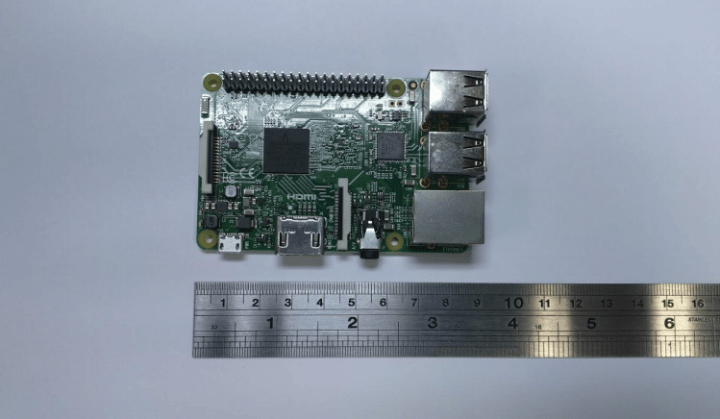
The latest device, the Raspberry Pi 3 Model B (RP3B) has been listed on the FCC website and it can even be seen on the cover of a magazine. All signs point towards an imminent release, most likely in the coming week. Finally implementing a long missing feature, the latest model will come fully equipped with Wi-Fi and Bluetooth support. While it doesn’t look too different from the last one in terms of other hardware specifications, these features are incredibly important to expand the Raspberry Pi user base.
Wi-Fi support comes in the form of 802.11 b/g/n, which means it only supports 2.4 GHz frequencies. It’s not the most modern Wi-Fi solution, but it gets the job done. Similarly, this model also supports Bluetooth 4.0, which is two steps behind the latest standard, Bluetooth 4.2. But then again, there’s not much to expect in terms of the latest features with the Raspberry Pi devices; being cheap and easy to replace is one of its key features.
Between the start of rumors regarding the latest device and detecting the FCC listing, the Internet thought the processor looked much like the previous one. But due to a cover from the Raspberry Pi-dedicated magazine MagPi, those rumors were laid to rest. A photo claimed to be from the product catalog of British electronics retailer CPC, uploaded to Reddit by skelinton. The RP3B is the first of the brand to feature a 64-bit quad core ARM 7 processor, which runs at 1.2GHz. Skelinton later uploaded an image of a claimed pre-order where it said the device is equipped with an ARM 8 processor instead.
So let’s go through what hardware has been put into the RP3B aside from all the above. The ram capacity is the same as before at 1GB, it has four USB 2.0 ports, a 4 Pole stereo output and composite video port, as well as a full-sized HDMI port. Video chatters can enjoy a CSI camera port for connecting a Raspberry Pi camera and there’s also a DSI display port to connect a RP touchscreen display. And of course, there’s a MicroSD slot to boot up the system and store all other data.
Finally, there’s the improved power management. The Micro USB power supply unit has been upgraded to 2.5 A, something the company says will let you connect more powerful USB peripherals to the RP3 than to the previous models. Exactly what peripherals remains to be seen, but considering how the Raspberry Pi community make their own little uses for the nifty computer, it shouldn’t be long before more demanding peripherals are recorded and uploaded for everyone to see.
The Raspberry Pi 3 Model B will cost about $30 by default, but that doesn’t include a MicroSD card, which will bring the price up to around $45. Even with all this information, we’re still waiting for the official announcement.
Editors' Recommendations
- How to change your router’s Wi-Fi password
- How to get Wi-Fi access anywhere at any time
- What is Wi-Fi 7: Everything you need to know about 802.11be
- This custom hoverboard is entirely powered by Raspberry Pi
- These are the airports that actually have really fast public Wi-Fi


